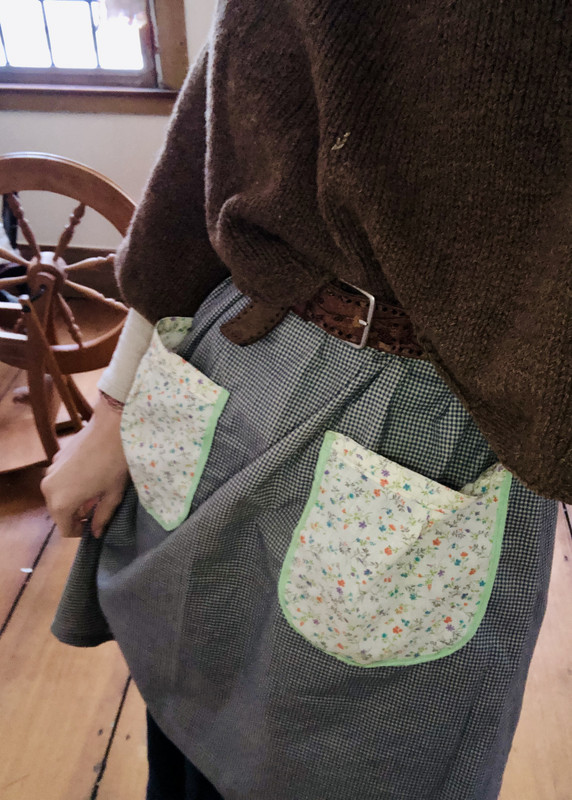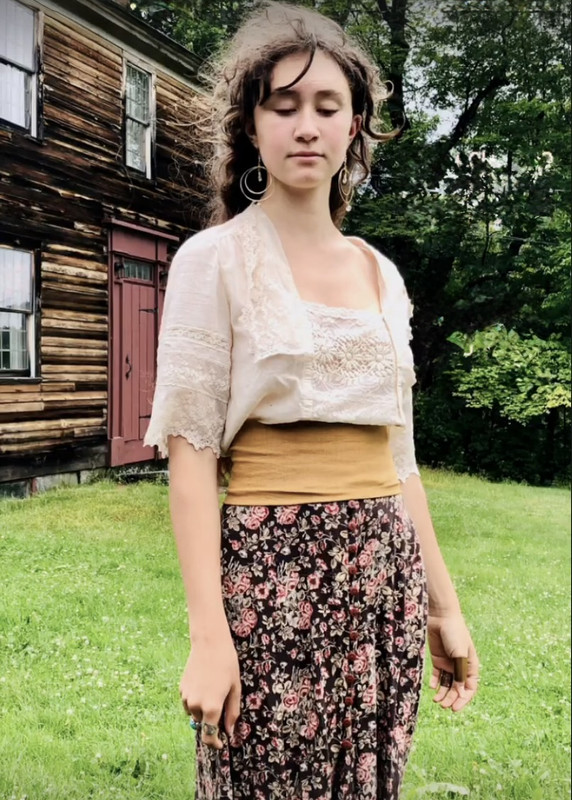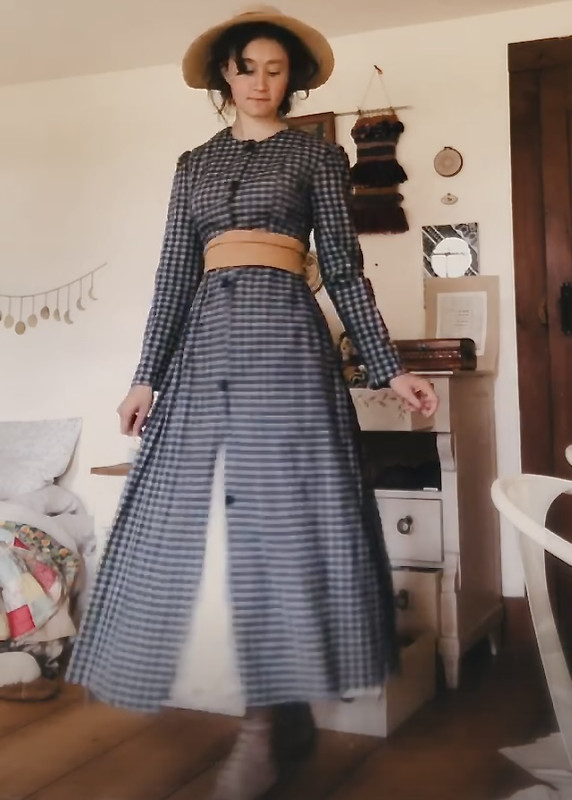Historybounding
What is Historybounding?
Historybounding is my favorite way of wearing the historical garments I love making while avoiding too many strange looks in public. The term was first coined by Morgan Donner, an icon in the online historical fashion world. Historybounding is a spin-off of Disneybounding, a term referring to Disney visitors who wear character-inspired outfits rather than full costumes, which are prohibited in the parks. These outfits often consist of jeans and t-shirts paired with accessories and colors that evoke the characters’ looks.
Historybounding is very similar. Instead of wearing a complete 18th-century ensemble, for example, a historybounding outfit might simply draw on the style, silhouette, and colors of the time period. In this way, you can create outfits inspired by historical eras you love and wear them as part of your daily wardrobe.
Historybounding also opens the door to period mixing. When you aren’t concerned with the precise historical accuracy of a single time period, you are free to create outfits inspired by multiple eras. It allows you to explore your personal fashion style while drawing inspiration from history. It’s also a great way to showcase vintage pieces, handmade historical garments, or other clothing that might not fit seamlessly into the modern world.
By embracing the creativity of historybounding, you can blend historical inspiration with personal style, making history a natural part of your everyday fashion.
So, how do you historybound?
Version 1: Use pieces of clothing that are either vintage or made for a specific historical time period. This could be a blouse from the 1920s paired with tailored pants and a sweater, embracing the sophisticated look of the era. Or it could mean using a custom-made Victorian walking skirt to dress up a turtleneck and boots. I have used this approach in the photo to the right. Here, I am wearing a 1400s linen kirtle layered with a wool dress over it and a modern-day sweater. My hair is styled in a bun (vaguely 1850s), and I am wearing modern boots. The final look is neither a medieval peasant, as the kirtle was originally intended for, nor a typical modern-day outfit. It is, quite simply, historybounding.


Version 2: I tend to do this version less often since one of my goals with historybounding is to put to good use the historical garments I make. However, this approach is more versatile for those working with purely modern wardrobes. Instead of combining historical and modern garments, this version relies solely on modern pieces that work together to portray a specific time period or a general historical aesthetic. Items that work well include long skirts, button-up blouses, leather belts, knit sweaters, and other modern clothing that resembles historical styles. Depending on the look you’re aiming for, this can be a simple way to achieve a historical-inspired outfit. Time periods that work well in this approach include the Victorian and Edwardian eras, the 1940s, and that specific Jo March-from-the-2019-Little-Women look. These are all great styles that can be easily achieved with pieces you already own or can find at your local thrift store.
Historybounding Tip: If there is one thing that will make any outfit look more historical, it’s layers. Especially useful in winter—though helpful in warmer weather as well—layers can keep you warmer in your historical outfits while also enhancing their historical appearance. Think vests, layered skirts, leg warmers and stockings, blouses and suspenders, or dresses over dresses. In a world of jeans and t-shirts, your layered petticoats will make all the difference.
Historybounding Lookbook

Version 2. Not a specific time period but vaguely historical. Some good orphan vibes.

Layers!

Version 2. Remember what I said about Jo March? Also could be ~1900.

More layers. Handmade sweater, layered skirts and calico pockets. 1930's and Ma Ingalls vibes.

Version 1. Vintage blouse and modern skirt to make a slightly Edwardian ensemble.

Version 1. A good Gibson Girl hair style can make any outfit feel more Edwardian.

Version 1: Handmade wrapper coat styled as a dress with a petticoat and straw hat.

Version 1. Medieval hood, woven blanket wrap and layered skirts. Historical and goblin-y.

Version 2. Modern pieces but layered. Historical hair and a knotted belt can go a long way.